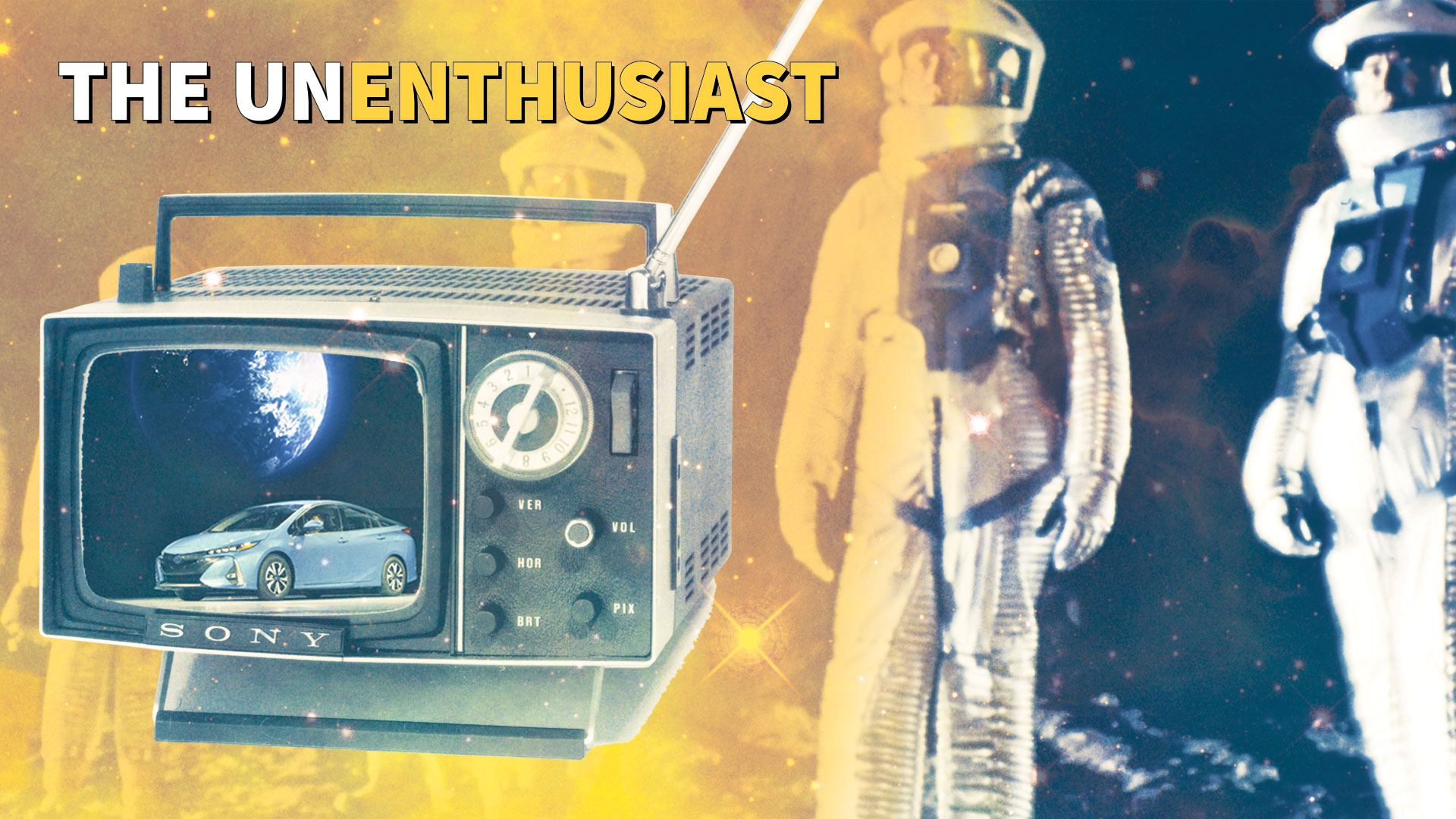

“Prius Prime?” my 13-year-old snarked. “That’s like the name of the worst Transformer ever.”
“Actually, it’s a plug-in electric hybrid,” I said.
But the kid wouldn’t let it go.
“Hey I’m Prius Prime,” he said, “and my power is to transform into a Prius. How awesome.”
He was right. The Prius Prime is pretty much a Prius that, via an electric plug, transforms into a slightly better Prius. It has some charming design quirks, weird windows and dystopian future-ish headlights, not to mention an interior center stack that looks like it was taken from a pile of Imperial Stormtrooper wardrobe extras. Ten years ago, it would have been the most amazing, most futuristic car ever. And therein lies its problem.
Toyota officially launched the Prius Prime last week in California. Everything about the Prime (which I guess I have to call it, like it’s some sort of tasty hybrid steak) seemed to be improved over the last time Prius deigned to offer a plug-in hybrid, in 2012. That car was weak tea, barely available, that embarrassed itself in a market it could have won. This car presents a much better menu—but it’s also being introduced in a much bigger, more futuristic market.
When the last plug-in Prius came out four years ago, Tesla had barely begun its electric assault on the senses and on the marketplace. No one, other than a few cranks, was seriously talking about self-driving cars. Uber and Lyft were just starting to expand. And yet the Prius still paled in comparison to beatable competition like the Nissan Leaf and Chevy Volt.
Now we’re rapidly approaching a new automotive age, but Toyota, despite significant updates, still seems to be working with a lag. For instance, the Prime, at its higher trims, offers an 11.6-inch center LED screen, a shipboard computer like what we’re seeing in Volvos and elsewhere. “Didn’t Tesla beat you to the punch on that?” someone asked the vehicle’s chief engineer at the launch.
“We thought of it six years ago,” the engineer replied. “We just couldn’t get it into the car until now.”
The Prius Prime is the car of the future of the past. It has a lot of charm, like sci-fi movies of the early 1970s did. But that’s a lot different than original Prius, which, when it came out in the late ’90s, literally seemed like it had landed from another galaxy. Now, Toyota seems to have much more earthly ambitions.
As far as I can tell, the car of the future will mostly comprised of three basic elements: Electrification, automation, and non-ownership. That may hard to imagine in a world where texting drivers in SUVs are mowing us down at a rapid pace, but it’s almost certainly coming. So how does the Prime, a beep-booping R2D2 of a car if ever there were one, meet the future’s demands?
ELECTRIFICATION
The Prime gets about 25 miles to a charge, which takes about two and a half hours at a 240-volt outlet. That’s good if you have a short commute, and even better if you have a workplace that allows EV charging. But these days, with pure EVs promising up to 300 miles range, it’s hardly a reason to genuflect. I drove the Prime 120 or so miles, a decent test range, and it averaged 53 MPG. Who wouldn’t want to get gas mileage like that? Still, my 2013 Prius, an inferior vehicle in most respects, gets 47 MPG. When I asked the Prius engineer if the car would ever go fully electric, he said, “we think that the combustion engine is better.” That’s something I’ve heard from Toyota engineers before. They’re willing to push for better hybridization, but not, seemingly, one step beyond.
NON-OWNERSHIP
This car is priced to move. Toyota offers a solid mid-range Prius Prime package, including the 11-inch center-stack tech, for $28,100. The EV charge is just big enough so that a buyer qualifies for $4,000 tax credit, plus an extra two grand and change if they live in a state that isn’t run by troglodytes. Let’s say you have a decent trade-in car, valued at $10,000. Then, suddenly, you’re looking at 12 grand to buy a brand-new Prius. Those are Crazy Eddie, everything-must-go rates. We may have reached a point, with ride sharing and car-sharing and some Mr. Rogers-style sharing that I haven’t even heard of yet beginning to crest, that car prices will actually start to drop the less and less people need to buy cars. If you get a Prius Prime now, it may be the last car you never need to buy.
AUTOMATION
Since Prius drivers notoriously don’t enjoy driving, you’d think that the Prime would be, well, primed for the self-driving revolution. But it’s nowhere close. In an age where your average Dodge screams at you if you veer out of your lane by a half-inch, there’s not much computer-aided driving going on here. At the press conference, I asked the vehicle’s chief engineer if there was any chance to build a self-driving Prius in the future.
“No!” the car writer next to me said sardonically.
But the answer really was no. In fact, the engineer didn’t answer the question at all. Toyota has no plans, at least none that it can announce, to automate the Prius.
This is hard for me to write. For years, I’ve owned a Prius, written glowingly about the Prius, and defended the Prius while you coal-rolling bullies threw rocks at me and regarded me with scorn. But now I’ve moved on to other, even lamer aspirations. Where is the solar-powered car that I don’t have to own? That I can summon via app to take me to the weed dispensary. That car is not the Prius Prime.
Transformer. Less than meets the eye.